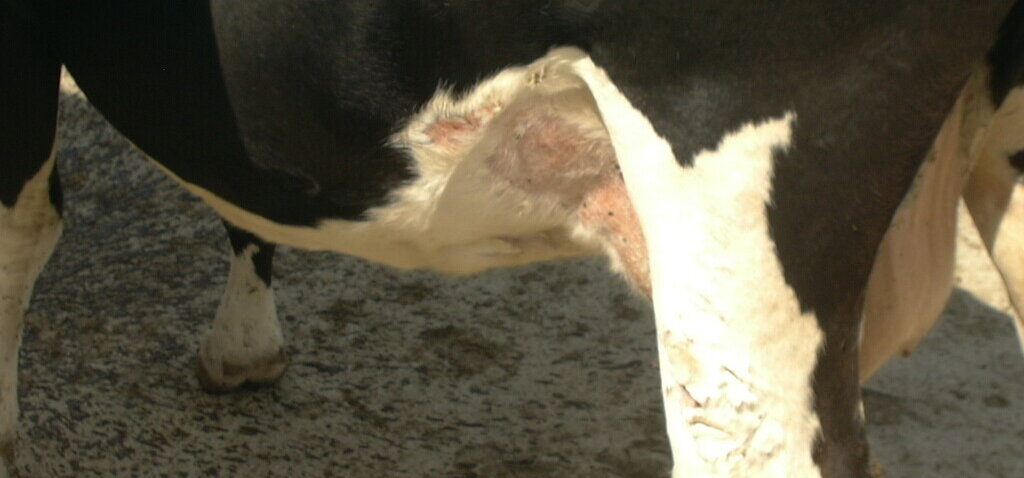Spring Eczema
October 6, 2003
By Peter J Lester
Spring Eczema is not unlike our other photosensitivity problems loosely referred to as eczema. In reality it has little or nothing to do with eczema, it is in fact a reaction to the light from the sun.
Plants convert the sun's energy into chemical energy or organic energy. The energy of the sun, after being converted into chemical energy as ATP, is used as the means for producing the carbohydrates and eventually fats (lipids) and other tissue compounds for the storage of this chemical energy.
Vitamin A is an alcohol with a high molecular weight and is derived from substances found in most green vegetables including fresh grass in the form of 'carotene'. Carotene needs first to broken apart as in its crude form it appears as two molecules of vitamin A joined end to end. Unfortunately, just breaking these bonds in itself does not constitute vitamin A, a little amide compound must first be attached before it becomes available to the foraging animal.
This transformation of carotene to true vitamin A is as a result of certain critical functions in the animals' body. Its conversion of carotenes to vitamin A occurs in the intestinal wall of rats, pigs, rabbits, sheep and cattle. In man however, the liver is where this conversion is attained.
In the flush growing spring season much of the nitrogen has yet to be transformed from nitrogen to protein. This greatly reduces the ability of the animal to convert carotene to vitamin compounds, and to absorb the vitamins produced. For the animal to benefit from the production of vitamin A, it must first be absorbed through the intestinal wall, this requires the formation of this very simple compound (CH2OH) on the end of the vitamin. Being a simple compound it is easily destroyed or inhibited in its formation. Research has revealed that a small amount of mineral oil is sufficient to inhibit its synthesis.
As this fat-soluble vitamin is absorbed through the intestinal wall damage to that wall will also affect its absorption. This means that animals with high parasite infestation will have increased difficulty with vitamin absorption.
Now let us have a look at what the lack of vitamin A will do in the animal. Vitamin A is involved in the integrity of the epithelium (the first line of defence), the protective outer skin of all cells. When this line of defence is compromised, or when there is insufficient vitamin A available the liver of the animal is stressed also. When liver tissue breaks down the bile pigment and the chlorophyll from the grass is released into the blood stream where it reacts with the sunlight giving us what is known as photosensitivity, revealed by an appearance of severe sunburn.What can we do?
- Refrain from using Nitrogen to boost spring growth.
- Make sure the animal receives a boost in Vitamins A, D & E at least three times per year, one prior to calving, one prior to mating, and one at drying off. As vitamins A, D, and E are synergistic, that is, they assist each in their action and reaction, always administer these vitamins together.
- Feed animals supplementary energy in the form of hay, molasses and high quality grain.
- Make sure that all animals are free from worm burdens.


